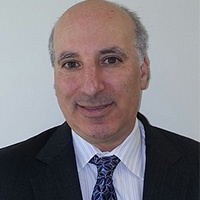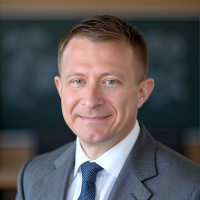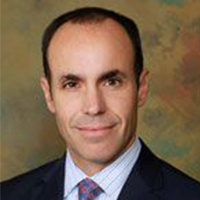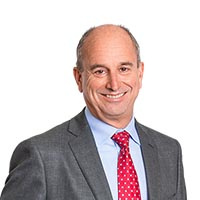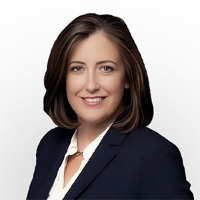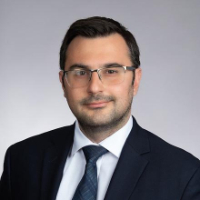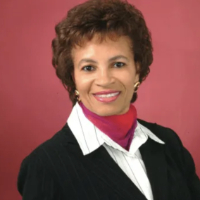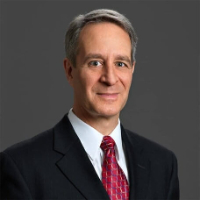Richard Milhous Nixon | Attorney
Top Local Lawyers
 Premium
Premium
Ivan Marc Waldman
Ivan M Waldman & Associates
Accident & Injury, Criminal, Employment, Motor Vehicle, Lawsuit & Dispute
1835 University Boulevard East Suite 328
Hyattsville, MD 20783
 Premium
Premium
Stephen Cromwell
Cromwell & Associates, LLC
Bankruptcy & Debt, Business, Tax,
7305 Baltimore Ave Suite 307
College Park, MD 20740
 Premium
Premium
David John Martin
Meyers, Rodball & Rosenbaum, PA
Accident & Injury, Wrongful Death, Car Accident, Medical Malpractice,
6801 Kenilworth Ave Suite 400
Riverdale, MD 20737
 Premium
Premium
Donald L. Bell
The Law Office of Donald L. Bell
Bankruptcy & Debt, Estate Planning, Estate Administration, Wills & Probate, Bankruptcy Litigation
6305 Ivy Lane Suite 315
Greenbelt, MD 20770
 Premium
Premium
Benjamin T Boscolo
ChasenBoscolo Injury Lawyers
Employment, Personal Injury, Accident & Injury,
7852 Walker Drive Suite 300
Greenbelt, MD 20770
 Premium
Premium
Morgan Anne Whitlock
Whitlock Law, LLC
Accident & Injury, Car Accident, Motorcycle Accident, Personal Injury, Wrongful Death
8701 Georgia Ave Suite 610
Silver Spring, MD 20910
 Premium
Premium
Robert Sarkis Demirji
The Law Offices of Gerstenfield & Demirji, PC.
Criminal, Traffic, DUI-DWI, Personal Injury, Juvenile Law
8720 Georgia Ave Suite 301
Silver Spring, MD 20910
 Premium
Premium
Jeanett Palacios Henry
Jeanett P. Henry, LLC
Slip & Fall Accident, Accident & Injury, Personal Injury, Medical Malpractice, Wrongful Death
8403 Colesville Road Suite 1100
Silver Spring, MD 20910
 Premium
Premium
Omar V. Melehy
Melehy & Associates LLC
Employment, Employee Rights, Labor Law, Employment Discrimination, Wrongful Termination
8403 Colesville Road Suite 610
Silver Spring, MD 20910
About Richard
Nixon was born in Yorba Linda, California. He attended undergraduate school at Whittier College, and earned a law degree from Duke University School of Law in 1937. Nixon served in active duty before starting a career in politics, a path that ultimately led him to the presidency.
Nixon attended Whittier High School, where he received good grades and played football. He received an offer to attend Harvard University for college with a stipend, but he declined. Instead, he attended Duke University on a scholarship. Nixon became president of the Duke Bar Association during his tenure there, and graduated third in his class. He was also inducted into the Order of the Coif.
In 1947, Nixon was elected as the Republican representative for the 12th Congressional District in California. Nixon's accomplishments in office included establishing federal law (the Taft-Hartley Act of 1947) to reduce the power of labor unions. He belonged to the Education and Labor Committee, and advocated for passage of the Marshall Plan. In late 1947, Nixon joined the House Un-American Activities Committee (HUAC).
Nixon also co-sponsored the Mundt-Nixon Bill, which mandated registration for all members of the Communist Party and cataloged all their printed and broadcast material. Nixon helped break the Alger Hiss spy case in 1948, and was re-elected in his district after winning the primaries for both major parties.
The following year, in 1949, Nixon joined the race for United States Senate. He jockeyed with Sheridan Downey, the Democratic incumbent, for the position. Nixon ultimately won the election, and set to work opposing global communism. Nixon supported Alaska and Hawaii becoming US states, benefits for illegal immigrants, civil rights, and federal aid to India and Yugoslavia.
In 1953, Nixon he was chosen to be the Republican vice presidential candidate. As VP, he attended Cabinet and National Security Council meetings, toured East Asia,and focused on international relations upon his return.
Running once again alongside Eisenhower, Nixon was re-elected vice president in 1957. During the second term, he helped Congress pass the Civil Rights Act of 1957. He visited Uruguay in 1958 with his wife, and in 1959 attended the opening of the American National Exhibition in Moscow.
In 1960, Nixon officially launched his campaign as President of the United States. He lost the race against Kennedy by a margin. Accusations of voter fraud ensued, but Nixon chose not to fight them. Instead, he returned to California with his family after the election, where he returned to practicing law. During that time, Nixon wrote a bestselling book called Six Crises, which was about the Hiss case and the Fund Crisis.
In 1962, Nixon was pulled reluctantly into politics once again. This time, he ran for California governor against incumbent Pat Brown. Nixon entered the race, but ultimately lost to Brown.
After the race, Nixon joined the firm Nixon, Mudge, Rose, Guthrie & Alexander as a senior partner. In 1967, he returned to politics by entering the upcoming presidential race. Nixon defeated both Democratic candidates, pledging national unity as his presidential priority.
Nixon assumed the role of president in January 1969. In 1972, he visited China with the hopes of establishing good relations between the two nations. He earned the respect and trust of Chinese Premier Zhou Enlai, and ultimately opened new doors to improved China-US relations. Another priority of the Nixon administration was ending the Vietnam War. When peace talks failed, Nixon ordered a ground invasion of Cambodia to end the war. By 1973, the administration phased out conscription of American soldiers, and pledged a complete removal of troops in the Paris Peace Accords.
In Latin America, Nixon supported Kennedy's Bay of Pigs Invasion in 1961 and the 1962 Cuban Missile Crisis. The Nixon administration vehemently opposed the election of Salvador Allende as President of Chile in 1970, and went as far as organizing strikes against Allende, who died in a coup d'etat in 1973. Another key issue was the Soviet Union. Nixon met with leaders in Moscow in 1972, hoping to start a new era of peace between the US and Soviet Union. The Soviet Union and China pledged to withdraw support from North Vietnam with the intention of making those improvements, but the peace talks ultimately stalled. To improve relations with the Middle East, Nixon established the Nixon Doctrine, which stated that the US preferred to have its allies defend themselves if necessary instead of the US joining in combat. US support to Israel increased tremendously during that time. Israel's victory in the 1973 Yom Kippur War, however, resulted in the Arab OPEC nations' boycott on selling oil to the US. The event was later called the 1973 oil crisis. Gasoline shortages and rationing the US followed, and the Nixon administration worked to establish peace. Nixon resumed work on the Middle East Peace Negotiations with the hopes of creating peace. He became the first US president to visit Israel in 1974.
Nixon assumed office with a 4.7% inflation rate, which was the highest since the Korean War. Nixon combated the issue with price controls, which produced food shortages that drew widespread criticism and ended in 1974. A second part of Nixon's New Federalism policy was to reduce power to state and elected officials and establish a government-run post office, the United States Postal Service, in 1971. Nixon also created the first Earth Day in 1970. He also formed the Environmental Protection Agency and supported the Clean Air Act of 1970 and OSHA. He also improved healthcare by establishing Medicaid and allowing the formation of health maintenance organizations, or HMOs. He mandated that employers give employees healthcare coverage and called for more sickle-cell research, education, and treatment; Nixon signed the National Sickle Cell Anemia Control Act in 1972.
During his time in office, Nixon pushed for desegregated schools. By 1970, fewer than 10% of African American children attended segregated schools. Nixon also enacted the Philadelphia Plan in 1970, which was a federal affirmative action plan, and supported the Equal Rights Amendment. His administration is credited with appointing more women to positions than any previous administration.
Nixon was the incumbent president in 1969, when American astronauts Neil Armstrong and Buzz Aldrin landed on the moon. Nixon reduced funding for NASA, but he did launch a cooperative program between NASA and the Soviet space program in 1972. Nixon ran again for president in the 1972 campaign. He faced Democratic opponent Senator George McGovern of South Dakota. Nixon won all states except Massachusetts and Washington, D.C., defeating McGovern with over 60% of the popular vote.
With public opinion favoring him leaving office, Nixon resigned in August 1974. Gerald Ford became the new president.
Nixon was disbarred from the New York State Bar Association in 1976. He spent the next decade writing, traveling, and speaking. Nixon focused on improving US relations with China and the Middle East, and was ranked as one of the world's 10 most admired men in a Gallup poll.
Nixon died of a stroke in 1994, less than one year after his wife died. The Nixons are buried at the Nixon Library and survived by their children.
Education
Whittier College
BA (History)
1934
Recognitions & Achievements
 Honors / Awards
Honors / Awards
-
Navy and Marine Corps Commendation Medal (2)
Notable Work
 Publications
Publications
RN: The Memoirs of Richard Nixon ()
1978
Leaders ()
1982
Real Peace ()
1984
No More Vietnams ()
1985
()
1999 / 1988
In the Arena ()
1990
Seize the Moment ()
1992
Beyond Peace ()
1994




